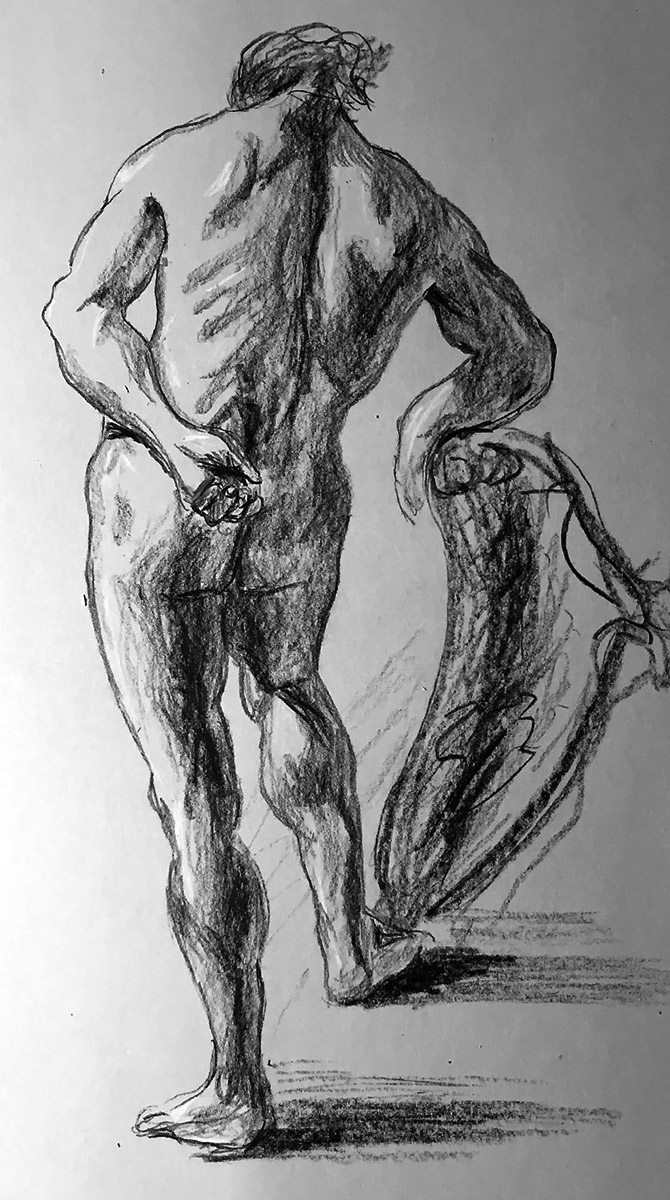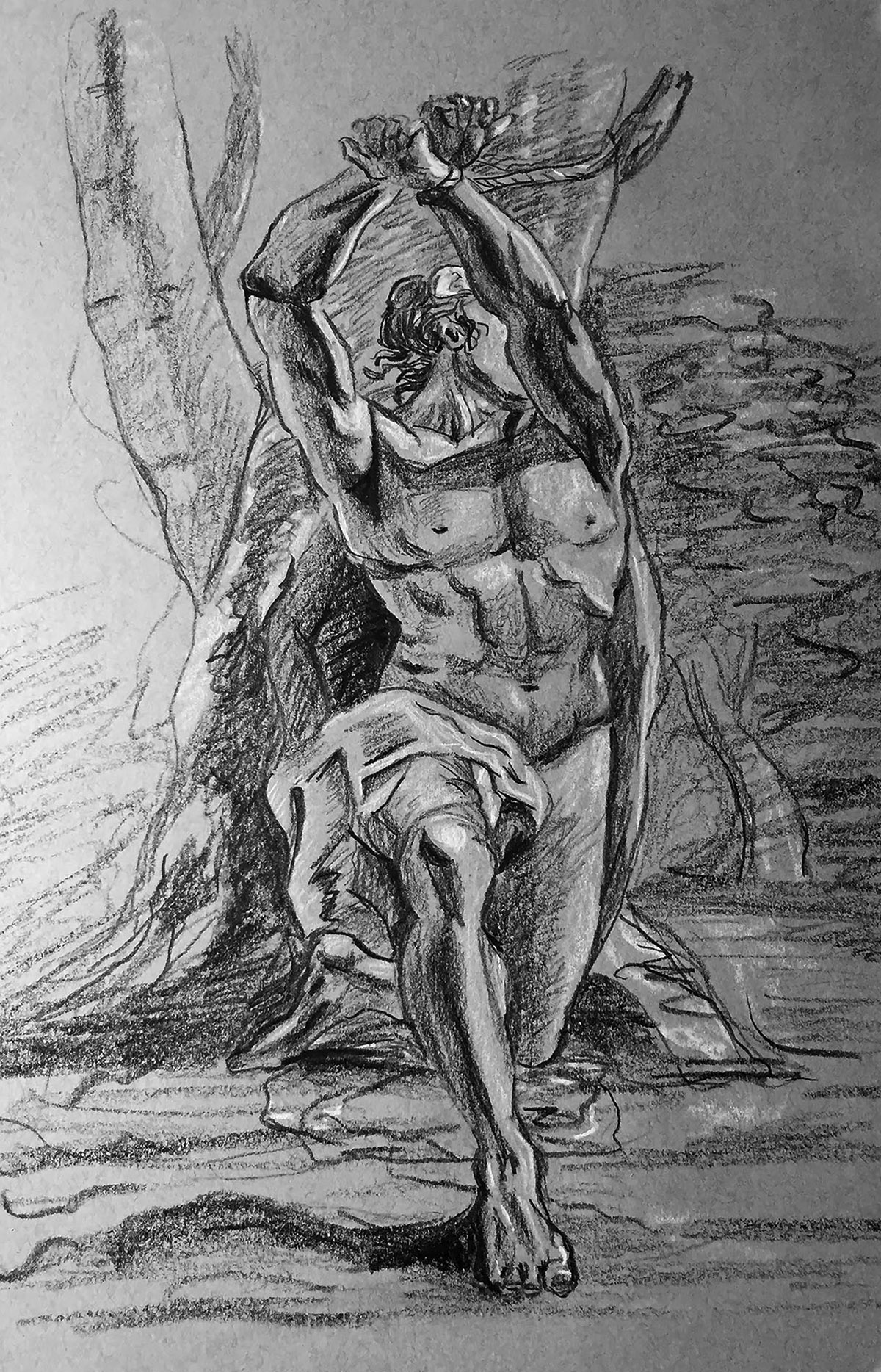
This post contains a drawing in Prismacolor® pencils that was copied from a work in chalk by the Italian artist Giovanni Battista Piazzetta. That is some name, isn’t it? I counted twelve syllables. There seem to be a lot of Italian names that are of similar complexity. I feel bad for all the Italian school teachers that had to do a roll call every day. I hope they got paid overtime. I just realized how corny my sense of humor is. I have been in denial for so long. Anyway, I know a lot of you are not familiar with the name Giovanni Battista Piazzetta. I am not either but I will do some research on behalf of both of us.
I have been in denial for so long.
The following information has been taken from the Virtual Uffizi website which refers to itself as the unofficial website of the Uffizi museum in Florence, Italy. Giovanni Battista Piazzetta’s drawings and paintings were noted for their Rocco style, with subtle coloring and rounded forms of religious and genre subjects. His father was a sculptor, and Piazzetta studied woodcarving with him before studying painting with the Venetian Baroque painter, Antonio Molinari. Molinari along with the Bolognese painter, Giuseppe Crespi, and the Emilian artist, Guercino all had a big impact on Piazzetta’s work. Even though Piazzetta did not receive many commissions throughout his career, he also illustrated books with drawings to pay the bills. His illustrated work is reminiscent of Rembrandt’s paintings. In all his works, Piazzetta created complex scenes where the subject was never obvious, and his characters were immersed in more than it seemed. The subjects he created would take on several different meanings. Piazzetta also added melodramatic features and had a reputation for being a darker artist than his Venetian contemporaries. Much of his later years were spent teaching, and although not wealthy, Giovanni Battista Piazzetta was a well-respected artist.

